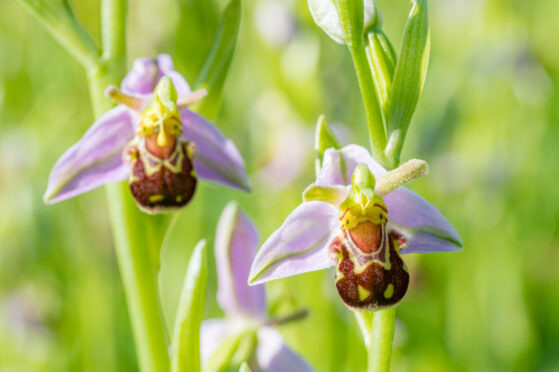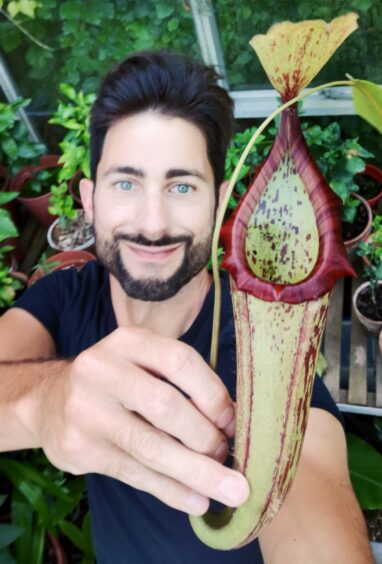
Chris Thorogood has travelled the globe in search of irises, orchids, hyacinths and many more rare plants and flowers in their natural habitat.
Here, the botanist and author tells Alice Hinds the Honest Truth about the beautiful blooms he has found in unusual places.
Why did the broomrape spark your passion for plants?
Broomrapes are parasites: leafless ghoul-like plants that graft themselves on to the roots of other plants. They possess no chlorophyll because they’ve forsaken photosynthesis for a life of crime. Who wouldn’t be excited by them?
When I was a kid, I grew them in our back garden as my first botanical experiment. Later, they became a focus of my research to understand how new species of broomrape evolve. This took me cliff-top dangling, golf ball ducking, crawling under fences, and into people’s back gardens – even my mum collected specimens from a churchyard and was caught, trowel in hand, by the curious vicar. Broomrapes were some of the first plants that caught my attention and I still get a thrill when I see one today.
Is it true some varieties of orchid mimic female insects?
Yes, bee orchids produce 3D, furry little flowers that resemble insects. They mimic the scent and appearance of female insects to trick males into attempting to mate with the flowers. Amorous male bees, thrusting against the flowers, inadvertently pick up and deposit pollen, all to the benefit of the plant and receiving no reward in the process. It’s known as pseudocopulation in the science biz. The Aegean is their capital, and I’ve spent many a happy hour there smiling at these curious flowers.
Why do you describe Mount Kinabalu as a “botanical wonderland”?
This mountain in Borneo is a wilderness of orchids and pitcher plants. Standing 13,435ft tall, it is the largest in the Malay Archipelago, and 20th most prominent in the world. Mount Kinabalu was a place of pilgrimage for botanists for centuries who left a rich legacy from their collections and accounts.
Today, thousands of people ascend every year for the incredible views from the summit at dawn but I went there for the plants. I climbed up and down the mountain twice in one week, once by the popular tourist trail, and then by the harder ascent from Mesilau, a wild and overgrown trail that is now closed. Every footstep up the mountain fed my growing addiction to plants.
Are there any plants you want to collect but still evade you?
There are some 400,000 species of flowering plant – the green wilderness is like an infinite living library for botanists to explore. Last year I worked with foresters in Malaysia to describe a new species of fairy lantern (a rare forest-dwelling flower) that had simply never been noticed before – and it’s so rare that it may already be extinct.
It was first discovered by my friend, the rainforest explorer Dome Nikong, in 2019, in a forest reserve in the state of Terengganu.
The plant has not been seen since Dome’s original encounter with it. I hope one day to be able to see this special plant in the wild.
What makes the desert hyacinth so special?
They grow across barren flats of Asia and North Africa, where they sprout from the bare sand. Leafless and devoid of chlorophyll, these are parasites and they extract their nutrients from the roots of desert shrubs called saxauls and tamarisks. There’s nothing quite like stumbling across a desert hyacinth erupting out of the barren, seemingly lifeless desert.
Why is plant conservation so important?
We rely on plants for our very existence: food, clothes, medicines, our mental health and wellbeing, and even the climate. We’ve never needed plants more than we do now. More than this, plants have an intrinsic value of their own – we share the biosphere with hundreds of thousands of plant species that existed long before us, and we have a duty of care to protect them.
Chasing Plants: Journeys With A Botanist Through Rainforests, Swamps And Mountains, Kew Publishing, £25, available now

Enjoy the convenience of having The Sunday Post delivered as a digital ePaper straight to your smartphone, tablet or computer.
Subscribe for only £5.49 a month and enjoy all the benefits of the printed paper as a digital replica.
Subscribe